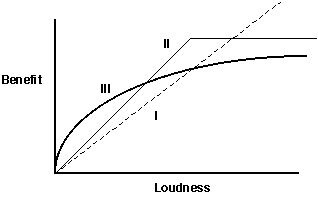
(Note -- using the return links here will allow you to go back to the exact place you left the other page from)
FITNESS (W): the sum of direct and indirect fitness. For our purposes, it is largely direct fitness which is usually defined as the number of grandchildren. However, many other definitions or stand-ins for fitness are often used -- for example, fecundity, number of mates, number of eggs, territory size, territory quality, etc. For more detailed information about the fitness concept including how to calculate relative fitness, press here.
(press here to return to previous place in text)
CURRENCY: units that either directly or indirectly measure fitness, examples are grandchildren, offspring, eggs, energy, time, chance of death, etc. In both games and optimality models, benefits and costs must be stated in a common currency and that currency must used throughout the model. Attempting to find the correct currency is one of the most important aspects of modeling.
(press here to return to previous place in text)

(press here to return to previous place in text)
FREQUENCY-DEPENDENCE: when the relative fitness of some phenotypic trait such as a behavioral strategy depends on how commonly certain events or interactions occur. In the context of games, these events would be certain types of contests. Imagine that an animal with a particular behavioral strategy (focal animal) can experience two particular type of interactions. Further, imagine that one of these interactions is beneficial to focal animal while the other is detrimental. Clearly the fitness of the focal individual will depend on the relative frequencies of each type of interaction -- this is frequency dependence. (To see a detailed discussion of frequency-dependence that is tangential to game theory, press here.)
(press here to return to previous place in text)
SATELLITE: Usually used in discussions of sexual selection in regards to advertisement behaviors (generally by males). The classical example is from acoustic signaling where satellites are individuals who remain silent but take up a positions (usually hidden) near an actively advertising individuals. They attempt to intercept females that approach the caller. Thus, they do not pay as large costs as do the advertisers. Satelliting may be an evolutionary stable strategy (where at some frequency it produces the same lifetime reproductive success as alternative strategies such as advertisement) or a simple contingent behavior induced by, for example, poor physiological state.
(press here to return to previous place in text)